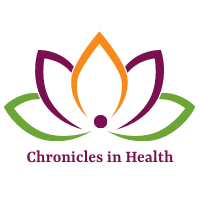Every human has an entire community of bacterial strains that reside in their gut. The challenge is whether this is a healthy and strong community, or if it has been taken over by a number of “bad” strains.
The Standard American Diet (SAD) of processed food, wide spread antibiotic use, and a number of other reasons has negatively affected the community of bacteria in our guts.
To encourage a healthy gut community, we need both prebiotics and probiotics, so let’s look at each one.
Probiotics
Probiotics are defined as beneficial live microorganisms found in certain foods and supplements that provide numerous health benefits such as protection from harmful bacteria, viruses, and fungi, communicate to our immune system, help regulate inflammation, and can possibly alleviate lactose intolerance. Probiotic foods include high quality plain yogurt, fermented foods such as sauerkraut, kimchi, kombucha, kefir (dairy and water), and non-pasteurized fermented vegetables and pickles.
Prebiotics
Prebiotics are food for the probiotics. These foods comes from different types of carbohydrates (mostly fiber) that humans cannot digest, but the probiotics can. Prebiotic foods include legumes, beans, peas, oats, bananas, berries, Jerusalem artichokes, asparagus, dandelion greens, garlic, leeks, and onions.
A symbiotic food that contains both prebiotics and probiotics is non-pasteurized sauerkraut, here is a recipe for a sauerkraut I make regularly. Pasteurizing or cooking fermented foods will destroy the good bacteria.
Supplements
Probiotics from supplements are available, but may not be worth the money as many don’t survive our stomach acid or don’t come with fibrous food sources for the bacteria to eat. There are also some people who should not take probiotics such as those with SIBO (small intestinal bacterial overgrowth). As with all supplements, it is best to consult a healthcare professional who is knowledgeable about probiotics before starting to take them.
As you can see, the different roles of prebiotics and probiotics are both important; eating a balanced amount of both can help ensure the balance of bacteria. This balance can improve your overall health.
Do you eat fermented foods? If yes, what is your favorite one to eat?
Be Blessed,
Heather
Posts may contain affiliate links. If you purchase a product through an affiliate link, your costs will be the same but Chronicles in Health will receive a small commission. This helps cover some of the costs for this site. I appreciate your support!
The information, including but not limited to, text, graphics, images and other material contained on this website are for informational purposes only. The purpose of this website is to promote broad consumer understanding and knowledge of various health topics. It is not intended to be a substitute for professional medical advice, diagnosis or treatment. Always seek the advice of your physician or other qualified health care provider with any questions you may have regarding a medical condition or treatment and before undertaking a new health care regimen, and never disregard professional medical advice or delay in seeking it because of something you have read on this website.
Sources
- Lewis, S., RD, (2017, June 3). Probiotics and prebiotics: what’s the difference? Healthline. Retrieved from www.healthline.com/nutrition/probiotices-and-prebiotics.
- Matthews, M. and Yan, D. (2000). Prebiotics and probiotics. The American Journal of Clinical Nutrition. 71 (6), 16825-16875.
- Roberfoid, M. Prebiotics and probiotics; are they functional foods? Oxford Academic.

